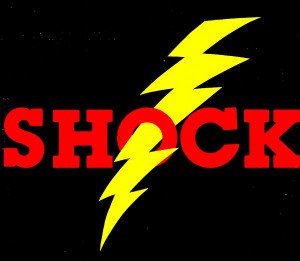Shock, is a medical term which refers to a serious, life-threatening condition. It 
First Aid Classes teach you that shock is when the circulatory system fails. This means, the essential oxygen and nutrients are not pumped to the vital organs, and waste products are not removed. This deprives organs including the heart and brain of oxygen which means they cannot function.
If untreated, it can lead to permanent organ damage and death.
Reassuring the patient and making them comfortable can help, as fear and pain can make the condition worse. First aid courses teach you to treat any obvious cause of shock, improve the blood supply to the brain, heart and lungs and get urgent medical assistance.
Encourage the patient to stay still if possible and help them to get comfortable. They should not be allowed to eat, drink or smoke.
Recognizing Shock
The early signs of shock include a rapid pulse, and pale, cold, clammy skin or sweating. As shock develops the patient will have the following symptoms:
- grey-blue skin (particularly inside the lips)
- weakness and dizziness
- nausea or vomiting
- thirst
- rapid, shallow breathing
- weak, thready pulse (if the pulse at the wrist disappears, this means about half of the blood volume has been lost)
As shock affects the brains oxygen supply, the patient will become restless and/or aggressive, yawning or gasping for air, and eventually unconscious. Finally, the heart will stop.
According to workplace approved first aid manuals, the most common cause of shock is severe blood loss. This could be bleeding from wounds, internal bleeding from organs, blood escaping into a body cavity or bleeding from damaged blood vessels due to a closed fracture.
However, other fluid loss can also cause shock. Fluids can be lost from diarrhoea, vomiting and severe burns.
Managing / Treating Shock
There are different types of shock. Sometimes, the volume of blood is sufficient, however the heart cannot pump it effectively. This can be due to heart failure, severe heart disease or a heart attack.
Training instructors state that once you have treated any obvious signs of shock, lay the patient down and raise and support their legs higher than the level of their chest. This will encourage blood flow back to the vital organs, as well as preventing loss of consciousness by having the head low.
Keep the patient warm, loosen any tight clothing around the neck, chest and waist, and continually reassure the patient. Monitor their responsiveness, breathing and pulse. If they become unconscious, put them into the recovery position and continue to monitor. If they stop breathing, begin CPR. Stay with the patient until emergency help arrives.
REFERENCES
First Aid Manual (The Authorised Manual of St. John Ambulance, St Andrew’s Ambulance Association and the British workplace approved), 2006.
